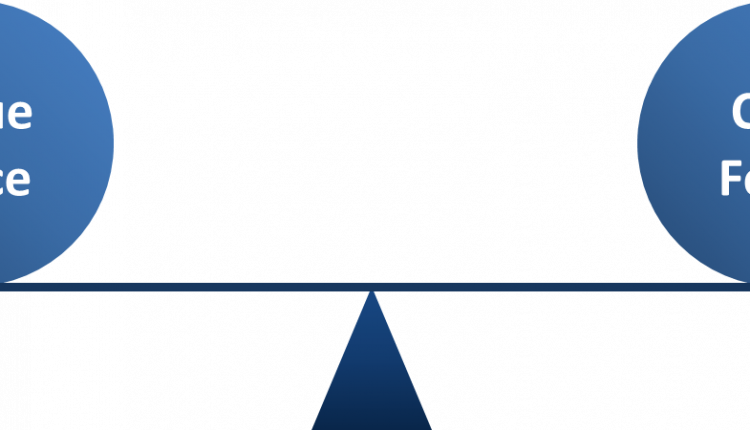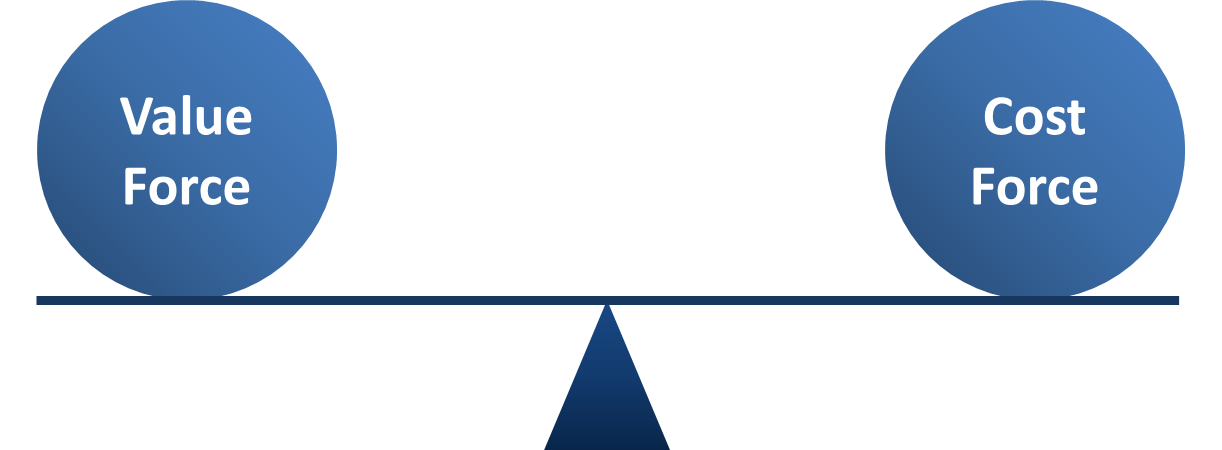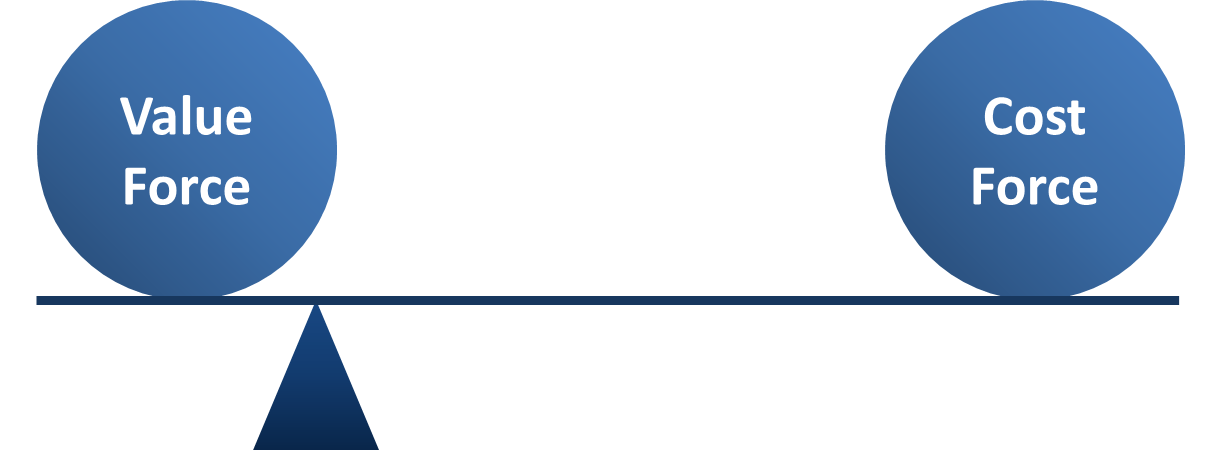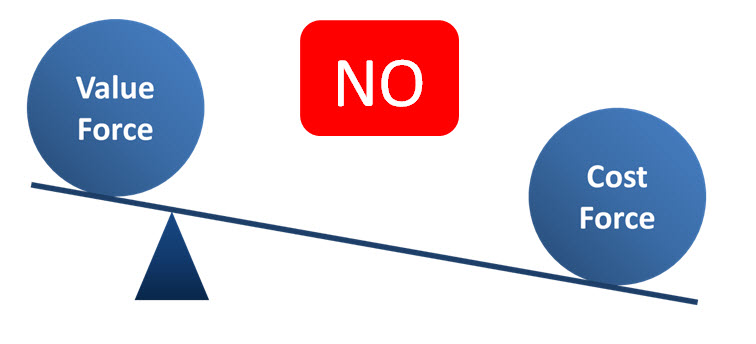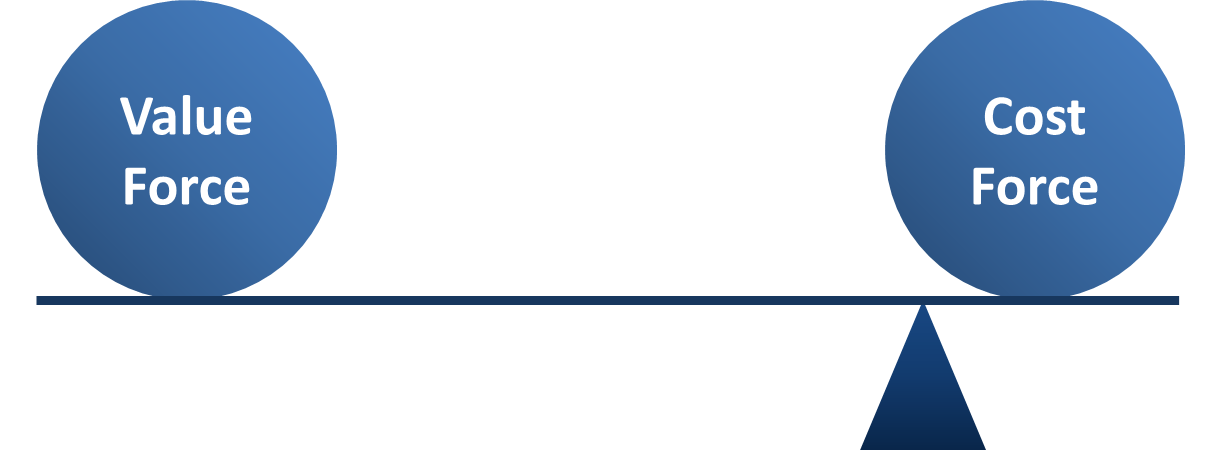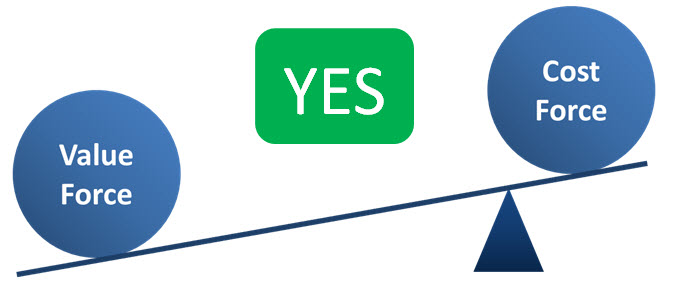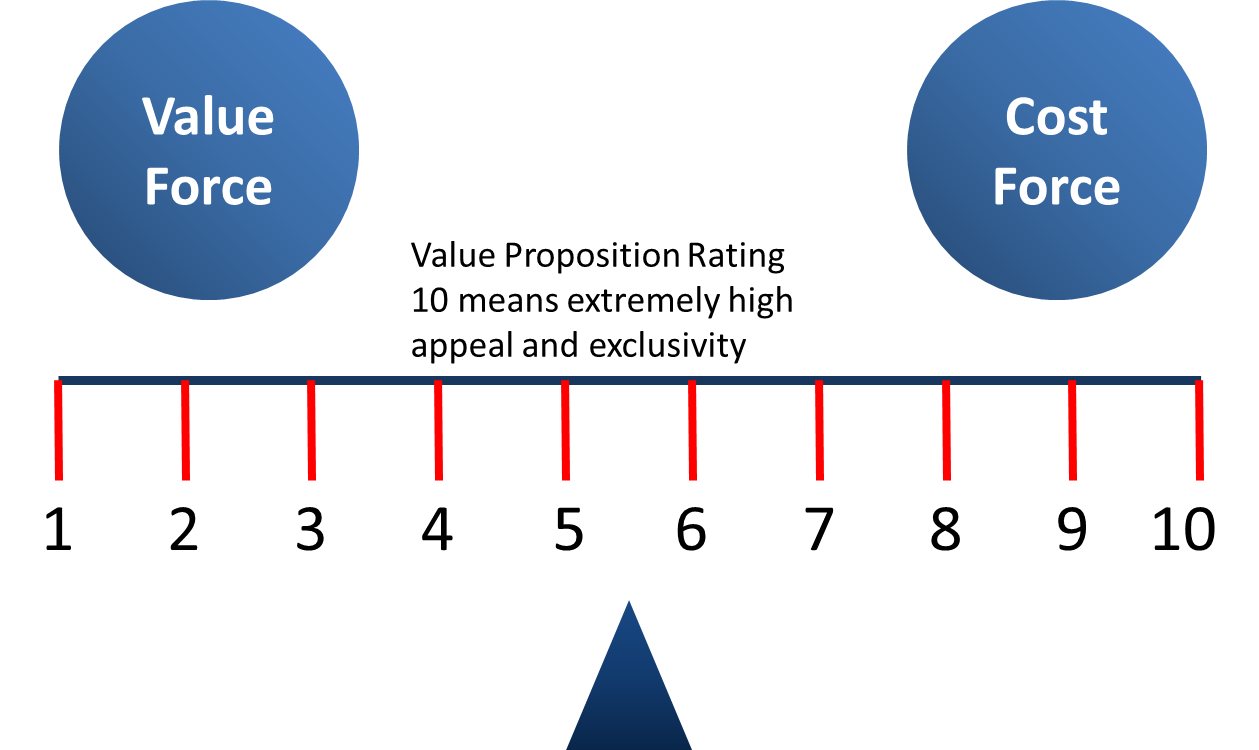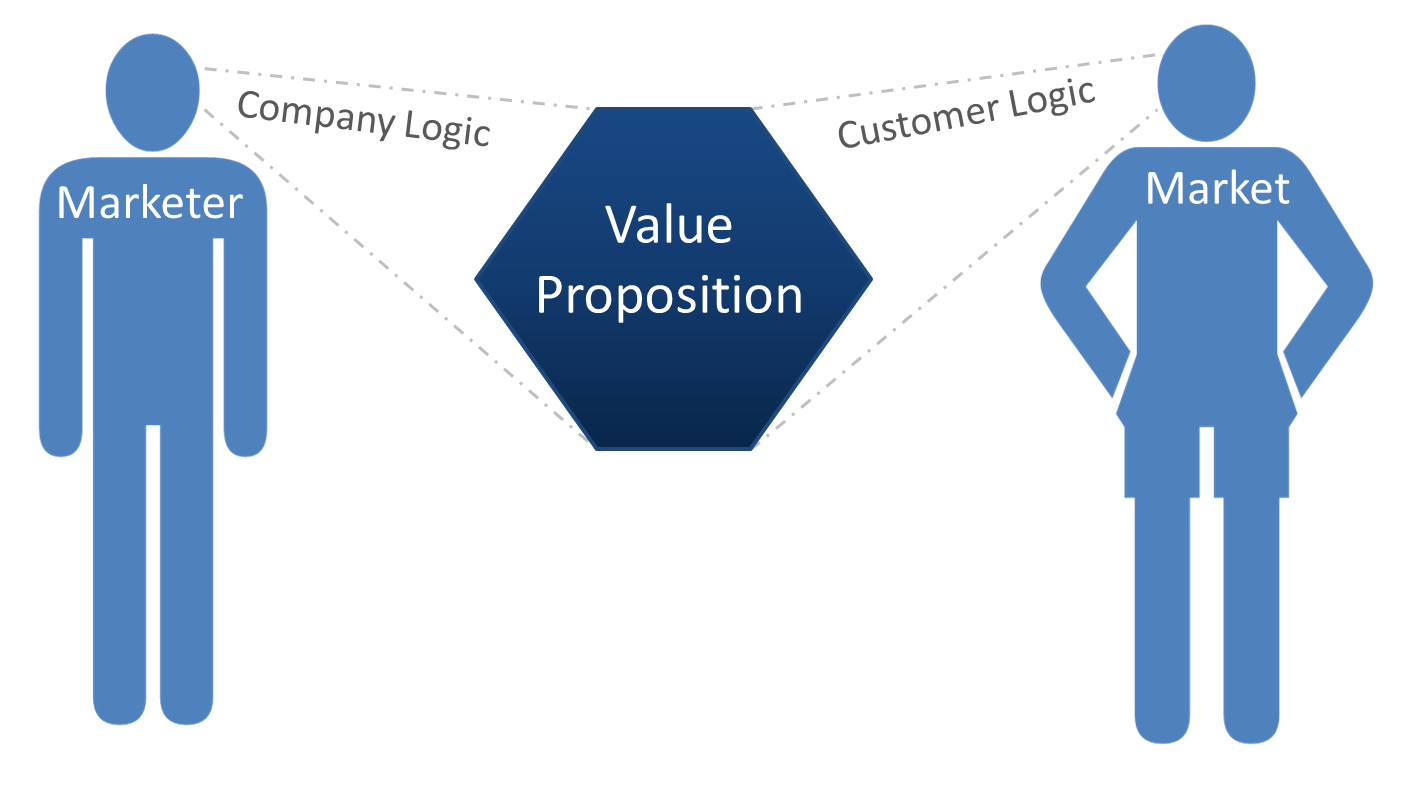Last week, I wrote about the importance of considering the value exchange scale in your marketing campaigns. I explained how increasing the perceived value of a product to your consumer can transform something as simple as a rock found in your backyard into the must-have toy sensation of the season — the Pet Rock.
This week, I’m going to share some more tactics to use this scale to impact your marketing efforts, but I must warn you, things are going to get a little deeper. I recommend reading last week’s article before you proceed.
Just to recap, Value Force is what your consumer thinks your product is worth, while Cost Force is the price that you, the marketer, salesperson or company, are charging for the same product.
When, in the mind of your consumer, Cost weighs more than Value, the prospect will say “no” to your offer. However, when the Value of your product weighs more than its Cost, you may receive the coveted “yes.”
Sounds simple, right? Let’s take another look at the value exchange scale:
We’re going to assume that for this hypothetical marketing case, both Value and Cost are weighted equally. Given this scenario, how can we affect the scale without directly adding to or subtracting from the Value Force or the Cost Force? It may help to think a little bit out of the box for this one. Let’s ask some “what if” questions:
What if the triangle moves to the left, like in the picture below?
The result is that the cost force slams to the ground, and the prospect says “no.”
What if the triangle moves to the right, like in the following picture?
The result is that the value force slams to the ground, and the prospect says “yes”
You may be thinking, “This is great in theory, but what the heck is the triangle, and how can I move it?”
The triangle is the marker that rates the value proposition through the eyes of the customer. This is customer-focused value proposition, not company-focused value proposition. This triangle is the lens through which to view all marketing — through the eyes of the customer.
As Flint McGlaughlin, Managing Director and CEO, MECLABS, says in his upcoming book, The Marketer as Philosopher,
… any marketing effort (even branding) that does not influence choice is waste. Wherever a choice is offered between competing options, there exists an implied fulcrum. Its hinge is the prospect’s power to choose, but its weight (on either side) is derived from the prospect’s power to see.
Try to keep the value exchange fulcrum in mind for all your decisions. You may be surprised by how your marketing efforts, and sales, can improve when you stop asking how things can benefit your company and start asking how they can benefit your consumer.
You might also like
Landing Page Optimization: Leveraging perception to tip the value scale (Part 1) [More from the blogs]
Customer-centric Marketing: SAP drives $100 million in revenue influence with customer webcasts [MarketingSherpa case study]
Lead Generation: How to build your own list [More from the blogs]
Personalization Marketing: 630% ROI for Portland Trail Blazers via dynamic ticket pricing [MarketingSherpa case study]



